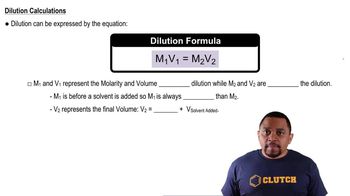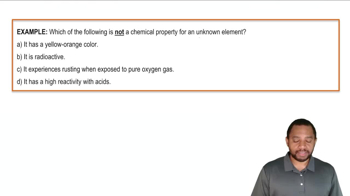Here are the essential concepts you must grasp in order to answer the question correctly.
Molarity
Molarity (M) is a measure of concentration defined as the number of moles of solute per liter of solution. It is crucial for preparing solutions, as it allows chemists to calculate the amount of solute needed to achieve a desired concentration. In this case, a 0.0268 M solution means there are 0.0268 moles of benzoic acid in every liter of chloroform.
Recommended video:
Dilution
Dilution is the process of reducing the concentration of a solute in a solution, typically by adding more solvent. Understanding dilution is essential for preparing solutions of specific molarity, as it involves calculating the volume of concentrated solution needed and the volume of solvent to add. This concept is particularly relevant when adjusting concentrations to meet experimental requirements.
Recommended video:
Benzoic Acid Properties
Benzoic acid (C7H6O2) is a weak organic acid that is slightly soluble in chloroform. Its properties, including solubility and dissociation in solution, are important for understanding how it behaves in a solvent like chloroform. Knowing these properties helps in predicting how the acid will interact in the solution and ensures accurate preparation of the desired concentration.
Recommended video:
Chemical Properties Example
 Verified step by step guidance
Verified step by step guidance


